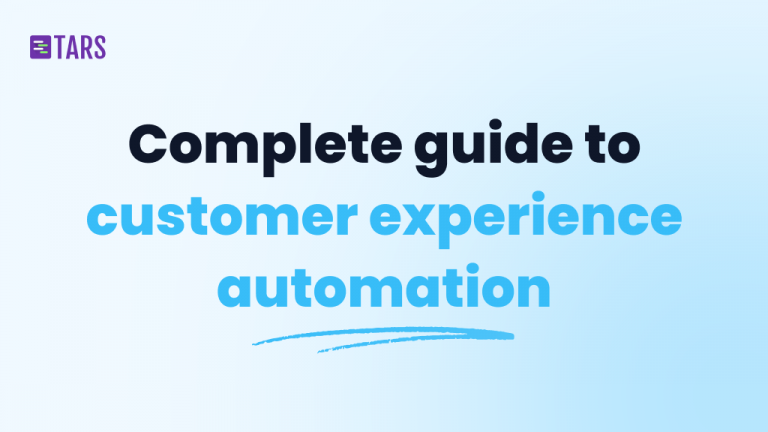Customer experience technology in 2025: What actually works and what doesn’t?

Something strange is happening in the customer experience world. Companies are spending more on technology than ever before, but customers aren’t happier. In fact, many feel like businesses have lost touch with what matters.
The problem isn’t a lack of tools. Most organizations are already using a dozen or more platforms to manage customer interactions. The real issue is that we’ve been so focused on implementing new technology that we forgot to ask whether it actually improves the experience.
Why most CX technology fails to deliver
Here’s what customers actually want: fast responses, convenient service, consistent experiences, and help from people who understand their problems. That’s it. Nothing revolutionary.
Yet when you look at how companies invest in customer experience technology, they often chase the newest features or the most impressive dashboards. They implement AI chatbots that frustrate customers, build mobile apps nobody uses, and create omnichannel strategies that force customers to repeat themselves across every channel.
The disconnect is real. Customers say experience matters almost as much as price and product quality when making purchase decisions. But most also say that customer experience at companies needs serious improvement.
What changed in the last few years
A decade ago, the options for automating customer experience were limited. A rigid structure following chatbots could understand simple questions. However, integrating systems required months of custom development. Open-ended questions were a recipe for never-ending loops. Getting AI to work reliably with your actual business data was nearly impossible.
That’s completely different now. The technology has matured to handle complex customer interactions, not just basic FAQs. AI Agents can understand context, remember previous conversations, and actually solve problems instead of just deflecting to human agents.
The right way to think about AI Agents
Let’s be clear about something: customers don’t hate automation. They hate bad automation that wastes their time.
When an AI Agent can instantly solve a problem that would have taken 20 minutes on hold, customers love it. When that same Agent can’t understand a slightly different question and forces them through a frustrating loop, they hate it.
The difference comes down to how the Agent is built. Early chatbots worked off rigid scripts and keyword matching. Modern AI Agents use natural language processing and connect directly to your business data. This means they can handle variations in how customers ask questions and provide accurate answers based on your actual policies, not generic responses.
At Tars, we focus on making this kind of reliable automation accessible. Our platform is built around AI Agents that can handle both customer support and customer acquisition. The core technology relies on a strong RAG (Retrieval-Augmented Generation) engine, which retrieves the right information from your Knowledge Base before generating a response. This means the Agent pulls from your actual documentation, policies, and product information instead of guessing. That reliability is what separates useful automation from frustrating automation.
Where automation actually helps
Not every customer interaction needs a human touch. Order status checks, password resets, basic troubleshooting, appointment scheduling, account updates. These are perfect for AI Agents because customers want them done quickly and correctly without waiting for an available representative.
This frees up your human team to focus on interactions where they add real value: complex technical issues, emotional situations, and high-value decisions. The conversations where listening, empathy, and creative thinking matter.
The key is making it easy for customers to reach a human when they need one. Your AI Agent should recognize when it’s out of its depth and escalate smoothly. Nothing frustrates customers more than automation that fails to recognize when they clearly need human assistance.

Building AI Agents that integrate with your actual workflow
Most automation projects fail because they create isolated systems. The AI Agent can answer questions, but it can’t actually do anything. Can’t update an account or reschedule an appointment.
This limitation turns Agents into fancy FAQ systems. Customers end up contacting a human anyway to complete actions, which defeats the purpose of automation.
Real automation means giving your AI Agent the ability to take action. This requires integrating with your existing systems: your CRM, help desk, payment processor, scheduling software, inventory management, whatever tools your business runs on.
Tars approaches this through a low-code builder with over 600 pre-built tool integrations. This means you can connect your AI Agent to your tech stack without months of custom development. The Agent doesn’t just provide information; it can actually complete tasks in real-time.

For example, a customer asks about changing their subscription plan. Instead of just explaining the options, the Agent can show current plan details, calculate the price difference, process the change, and send a confirmation. All in one conversation, without human involvement.
The data problem nobody talks about
AI Agents are only as good as the information they can access. If your customer data is scattered across disconnected systems, your Agent can’t provide personalized, contextual service.
Without access to purchase history, previous support tickets, and current account status, the Agent starts from scratch every time. The customer has to explain everything, and the Agent can only provide generic help.
This is why data integration is foundational to customer experience technology. Modern customer data platforms can consolidate information from various sources and make it accessible to your customer-facing tools. The challenge is organizational rather than technical: getting different teams to agree on data standards and priorities.
Personalization without being creepy
Everyone talks about personalization, but most companies do it poorly. Addressing someone by their first name in an email isn’t personalization. That’s just mail merge.
Real personalization means understanding where a customer is in their journey and proactively providing relevant help. A customer who just signed up needs onboarding support. A long-time customer experiencing their first issue might appreciate faster service.
This requires analyzing behavior patterns and using that information to trigger appropriate responses. Technology makes this possible at scale, but it requires careful implementation to avoid seeming intrusive.
The privacy concern is legitimate. Many customers are uncomfortable sharing personal data, even for better service. The solution is transparency about what data you collect and how you use it, along with obvious value in exchange for that data.
What your team actually needs
Customer experience technology often focuses entirely on customer-facing tools while ignoring the employee experience. This is backward because your employees use these tools every day.
If your customer service platform is clunky or requires navigating five different systems to help one customer, you’re making your employees’ jobs harder. Frustrated employees deliver worse customer experiences.
The best implementations involve employees in the design process. They know where the friction points are. They understand which features would actually help versus which sound good in a demo but don’t work in practice.
When you introduce AI Agents, frame them as tools that eliminate tedious work rather than threats to jobs. Your team should see automation handling repetitive tasks while they focus on the interesting, rewarding parts of customer service. This requires good change management, clear communication, and genuine listening to employee concerns.
Measuring what matters
Customer experience technology generates massive amounts of data. The challenge is figuring out which metrics actually indicate whether you’re improving.
Satisfaction scores and Net Promoter Scores provide useful signals, but they’re lagging indicators. More useful metrics focus on customer effort and resolution effectiveness. How hard was it for the customer to solve their problem? Did they get an answer on the first contact?
These operational metrics should connect to business outcomes. Are satisfied customers buying more? Staying longer? Recommending you to others? Customer lifetime value and retention rates reveal whether experience improvements translate to business results.
What’s coming next
The gap between what AI Agents can do and what customers expect from them is narrowing quickly. Natural language processing keeps improving, making conversations with Agents feel more natural.
This creates rising expectations. As AI gets better, customers expect consistent performance across all interactions. An Agent that handles one type of request brilliantly but fails at a similar request feels broken, even if it’s doing better than chatbots from a few years ago.
The next frontier is proactive service. Instead of waiting for customers to contact you with problems, AI can monitor product usage and identify when someone might need help. This allows you to reach out before frustration sets in.
Privacy regulations and customer awareness are also changing how personalization works. The future belongs to companies that deliver valuable personalization while respecting privacy boundaries and being transparent about data usage.
Making it work at your company
If you’re evaluating customer experience technology, a few principles can guide your decisions.
Start with customer problems, not technology features. Talk to your customers. Watch how they interact with your current systems. Find out where they get stuck or frustrated.
Think about integration from day one. A sophisticated tool that doesn’t connect to your existing systems creates more work instead of less.
Build AI Agents for collaboration with humans, not replacement. The goal is handling routine tasks while making your human team more effective at complex interactions.
Implement in stages rather than trying to transform everything at once. Start with one use case, learn from it, refine your approach, then expand.
Measure business outcomes, not just technology adoption. Track retention, customer lifetime value, support costs, or growth metrics that matter to your business.
The real opportunity
Customer experience technology has moved past the experimental phase. The question isn’t whether to invest in automation and AI Agents, but how to do it in a way that genuinely improves both customer outcomes and business results.
The companies succeeding aren’t necessarily the ones with the most advanced technology. They’re the ones who use automation to make service faster and more convenient, deploy AI Agents that actually solve problems, and give their human team better tools so those interactions are more valuable.
Most importantly, they recognize that customer experience is ongoing work, not a one-time project. Customer expectations change. Technology improves. Competitors evolve. Staying ahead requires continuous learning and refinement.
The opportunity is significant. As technology makes sophisticated automation accessible to more businesses, the gap widens between companies that implement it well and those that don’t. Your customer experience becomes a real competitive advantage, not just marketing language.
At Tars, we’ve seen this transformation firsthand. Companies that struggled with basic chatbots a few years ago are now running sophisticated AI Agents that handle complex support and guide customers through product adoption. The technology has caught up to the vision, and the results are measurable.
The question is whether you’ll take advantage of what’s now possible or stick with outdated approaches because they’re familiar. Customer expectations won’t wait for you to catch up.
A writer trying to make AI easy to understand.
- Why most CX technology fails to deliver
- What changed in the last few years
- The right way to think about AI Agents
- Where automation actually helps
- Building AI Agents that integrate with your actual workflow
- The data problem nobody talks about
- Personalization without being creepy
- What your team actually needs
- Measuring what matters
- What’s coming next
- Making it work at your company
- The real opportunity


Build innovative AI Agents that deliver results
Get started for freeRecommended Reading: Check Out Our Favorite Blog Posts!

10 best alternatives to Intercom (Fin AI) for AI-powered customer service [2025]

Customer experience automation: The complete guide to CXA in 2025

How to measure customer experience: The complete guide for AI-powered support and growth

Our journey in a few numbers
With Tars you can build Conversational AI Agents that truly understand your needs and create intelligent conversations.
years in the conversational AI space
global brands have worked with us
customer conversations automated
countries with deployed AI Agents